Oxford Tube

This picture is only in the blog because someone took it while I was sleeping and could not believe it
when I said it was not going to be published. By the way, this is the least awful of two.
Map on the street
We took so many pictures in Oxford. Unfortunately, I have not the least idea what any of the buildings are to share that info with you.
Sheridan Theatre
Broad Street
Display at the Information Centre.
The little Jaguar is 20.00 pounds. No, I did not buy one.
Balliol College
Flower baskets on the street.


Lincoln College
Hertford College is located in Catte Street, directly opposite the main entrance of the original Bodleian Library.

Bridge of Sighs
The Sheldonian Theatre was built from 1664 to 1668 after a design by Christopher Wren for the University of Oxford.
Bodleian Library

William Herbert statue at Bodleian Library, Oxford
William Herbert, 3rd Earl of Pembroke KG, PC (8 April 1580 – 10 April 1630) was an English nobleman, politician, and courtier. He was the son of Henry Herbert, 2nd Earl of Pembroke and his third wife Mary Sidney. Chancellor of the University of Oxford, he founded Pembroke College, Oxford with King James.

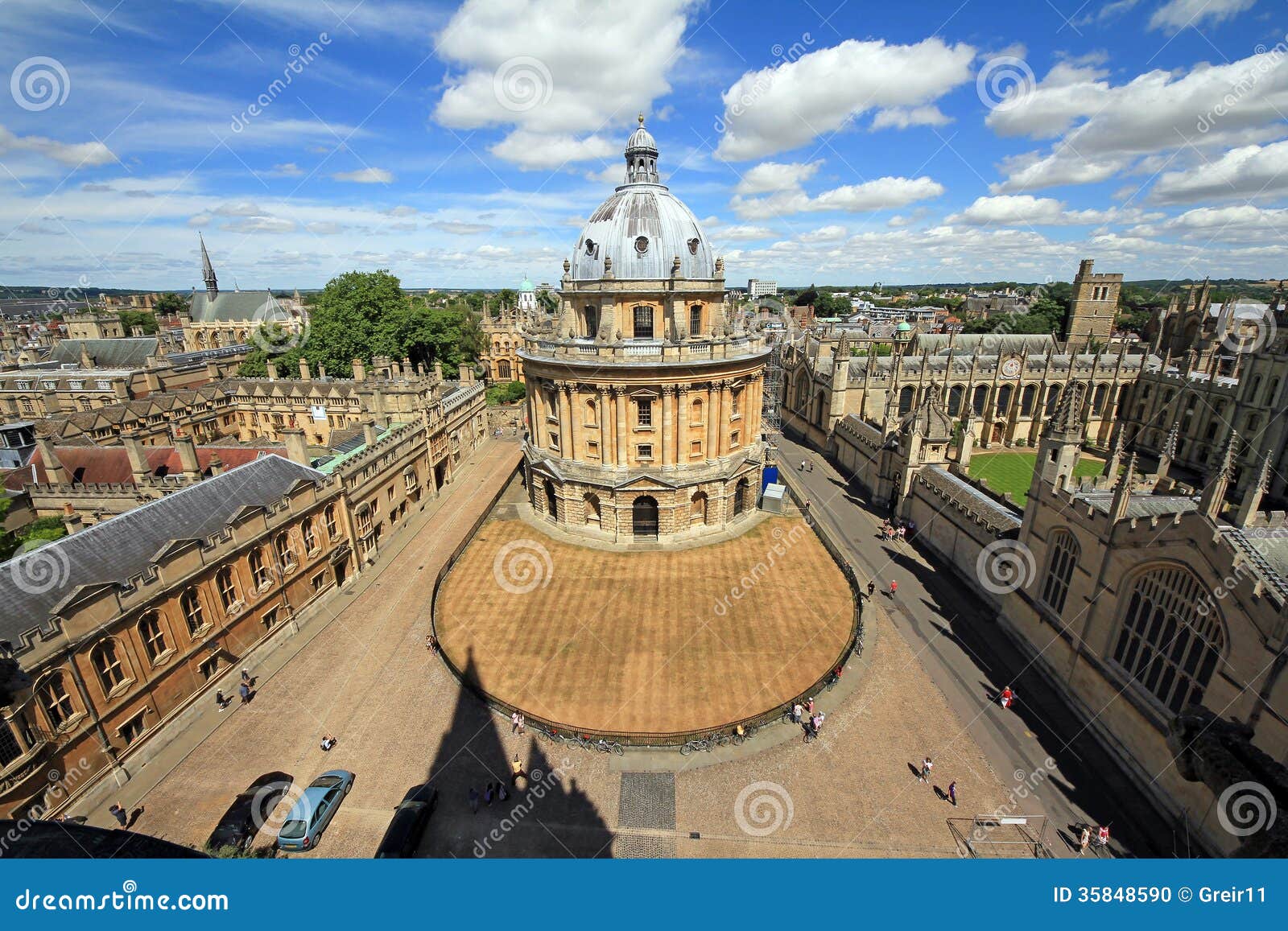
This is the wonderful space called Radcliffe Square with its central circular building - the Radcliffe Camera. The Radcliffe Camera (Camera, meaning "room" in Latin; colloquially, "Rad Cam" or "The Camera") is a building of Oxford University, England, designed by James Gibbs in neo-classical style and built in 1737–49 to house the Radcliffe Science Library. It is sited to the south of the Old Bodleian, north of St. Mary's Church, and between Brasenose College to the west and All Souls College to the east.

The university’s Examination Schools have entrances on both the High Street at the front and cobbled Merton Street to the rear. The Examination Schools are where the university’s formal exams take place, but during term time its purpose-built rooms are also used, in addition to lecture theatres in university departments across the city, for everyday lectures. The building itself was designed by Sir Thomas Jackson and completed in 1882.
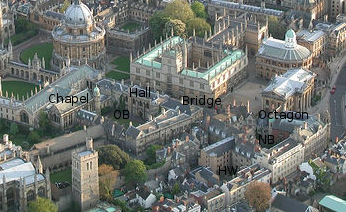
There are 38 colleges attached to Oxford University.
And a lot more bicycles. Some of the roads like this one are stone or brick. I saw several
people pushing their bikes in this area instead of riding them.
All Souls College
The college is located on the north side of the High Street adjoining Radcliffe Square to the west. To the east is The Queen's College with Hertford College to the North.
St. Mary's Church off Radcliffe Square
The official church of Oxford University.

Queen's College

Magdalen College - Grove auditorium
I was fascinated by the clock.
Magdalen College
Magdalen is pronounced something like Maudlin
Houses along Longwall Street.
Painted punts to rent and straw hats to buy at the gift store. Most of the 'boats' we passed while on the bus were natural colored. Unfortunately, we did not see anyone on the river while we were in Oxford. Oxford has two rivers, the Thames and the Cherwell.

Logic Lane
We went into a covered mall full of shops. We stopped to admire the special little cakes
decorated for Father's Day. I suspect it is not celebrated here on the 3rd Sunday of June since these
tiny cakes would not be consumable by then.
You will have to enlarge this picture to get the gist of our purpose in taking this picture.
This is a shoe store but the sign informs you that the shoes are made in Germany.
The Martyrs Memorial, by St Giles’, Magdalen Street and Beaumont Street
We sat on the steps of this monument to eat lunch because all of the park benches were
being used. We had lots of company. On a sunny afternoon many people were sitting on the
steps taking a break or eating lunch.
The Oxford Martyrs were tried for heresy in 1555 and burnt at the stake in Oxford, England, for their religious beliefs and teachings, during the Marian persecution of protestants in England.
The three martyrs were the Anglican bishops Hugh Latimer, Nicholas Ridley and Thomas Cranmer, the Archbishop of Canterbury.
The monument was not built until the 19th century.
The Ashmolean Museum. I suspect that we saw only a small part of the exhibits. This is not really to compensate for not going inside of the British Museum the other day. But it comes close.
Ashmolean Museum
www.ashmolean.org/
Admission free. Discover half a million years of art and archaeology, from Egyptian mummies to modern art, at the University of Oxford's Ashmolean Museum.
We become so accustomed to the ancient statues being colorless that it was a nice reminder
that originally many of them were full of vibrant colors. The colored statue is
a reminder of how many pieces were once painted.
The collection presented to Oxford in 1683 by Elias Ashmole was originally housed in Broad Street, it what is now the Museum of the History of Science – and was the first museum in England.
Ashmole's collection had in turn been built up around curiosities brought to Oxford in the sixteenth century by John Tradescant and his son. These included a Turkish toothbrush , the Dodo (whose remains are now in the University Museum), various eggs from Turkey, one thought to be a dragon's egg, and 'A Cherry-stone, upon one side St Geo: and the dragon, perfectly cut: and on the other side 88 Emperours faces.' Until recently, a cup made from a Unicorn's horn was on display. It can still be seen, but the horn is now ascribed to a rhinoceros.
It is not immediately event either that a centaur is a creature that is half man and half horse.

From the cast gallery
This link takes you to a page showing how the cast was successfully moved from elsewhere to the Ashmolean. It has pictures showing both the wood and metal supports used during the move.












Worcester College is open after 2 o'clock on weekdays to the general public. We just happened to be there at 2 and were lucky enough to be able to stroll through some of its grounds.
So much of Oxford is closed to the public including huge parks. I understand the reason behind this desire to keep out all of the tourists (that includes me) but it is disappointing that so much of the beautiful university area is inaccessible.
This enormous tree's branches were skimming the water of this tranquill lake.
Most of the benches in the park are made of wood. We saw a few older men sitting fast asleep on them. Possibly Alumni? This stone bridge and several others was along the water's edge.
Weeping willow shading the path
Cricket anyone?
Clubhouse at one side of the huge cricket field.
Ridiculus little bird someone used to adorn a tree.

A quiet corner of the garden
Definitely not a street sign anyone would see in London
Flea market once a week in Oxford

Vintage uniforms for sale

On the crossroads between the High Street, St Aldate’s, Cornmarket Street and Queen Street lies Carfax Tower, right in the heart of the city. In fact, many consider this to be the true centre of the city, and it’s the spot from which distances to other towns and cities are measured. The unusual name derives from the French word ‘carrefour’ the word for ‘crossroads’. It’s noted for its clock, which is a replica of the original church clock of 1676,
Carfax Tower on the corners of Queen and Cornmarket
















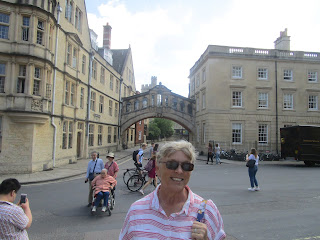







































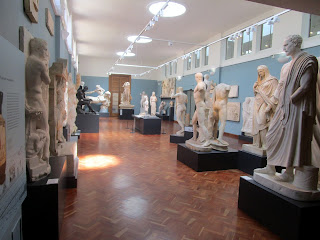



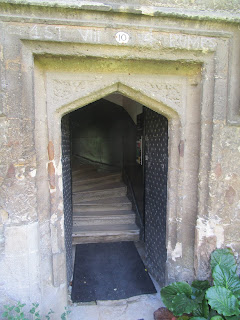
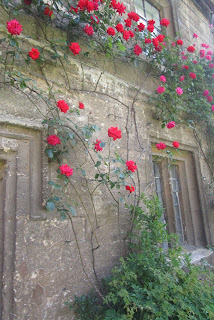































No comments:
Post a Comment